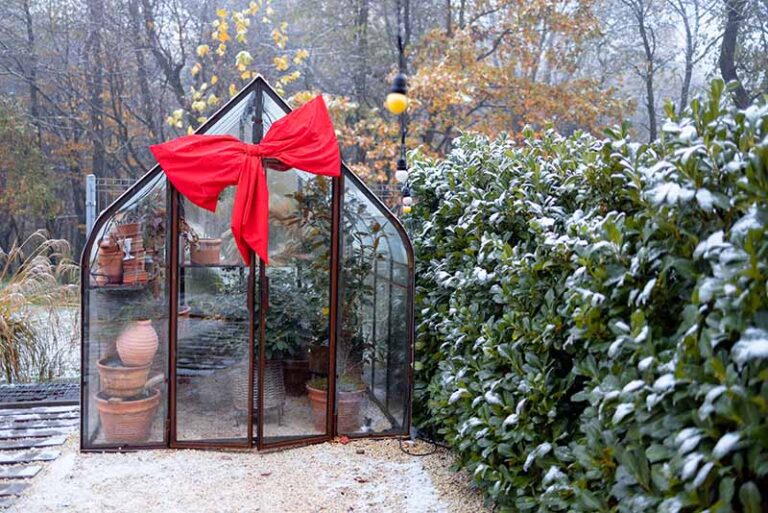A beautiful garden is a year-round labor of love, and keeping it in top shape requires ongoing care and attention. To ensure your garden remains vibrant and healthy throughout the seasons, it’s essential to follow a seasonal maintenance checklist. In this comprehensive guide, we’ll provide you with a detailed garden maintenance plan for each season, helping you stay on top of your garden tasks and enjoy a flourishing outdoor space year-round.
Spring Garden Maintenance: Welcoming New Life
- Early Spring (March-April):
- Clean up garden beds by removing dead leaves and debris, ensuring a fresh start for your plants as they awaken from winter dormancy.
- Prune shrubs and trees before new growth begins, promoting healthy branching and minimizing overgrowth.
- Check for signs of pests, such as aphids or snails, and address them promptly with natural remedies or environmentally friendly pest control measures.
- Late Spring (May-June):
- This is the perfect time to plant annuals, perennials, and vegetables, as the risk of frost has usually passed.
- Apply a balanced fertilizer to promote healthy growth and ensure your plants have the nutrients they need to thrive.
- Mulch garden beds to retain moisture, deter weeds, and maintain even soil temperatures, creating an ideal environment for plant growth.
Summer Garden Maintenance: Thriving in the Sun
- Early Summer (June-July):
- Regularly water your garden, especially during dry spells, to ensure plants remain hydrated and healthy.
- Deadhead flowers to encourage continuous blooming and maintain the garden’s visual appeal.
- Keep an eye out for signs of disease, such as powdery mildew or rust, and treat affected plants promptly to prevent further spread.
- Late Summer (August-September):
- Harvest vegetables and herbs at their peak ripeness to enjoy the flavors of your garden.
- Prune overgrown branches and stems to maintain the garden’s shape and prevent overcrowding.
- Continue watering, but adjust the frequency based on weather conditions, aiming for deep, consistent moisture in the soil.
Autumn Garden Maintenance: Preparing for Winter
- Early Autumn (September-October):
- Collect fallen leaves for compost or mulch, utilizing this natural resource to enrich your garden’s soil.
- Divide and transplant perennials as needed, ensuring they have adequate space to thrive in the upcoming seasons.
- Plant spring-blooming bulbs like tulips and daffodils, planning ahead for a vibrant display after the winter chill.
- Late Autumn (November-December):
- Clean and store garden tools properly, preventing rust and damage during the winter months.
- Cover tender plants with frost blankets or cloths to protect them from the freezing temperatures.
- Apply a layer of winter mulch to protect the soil from erosion, maintain temperature stability, and provide insulation to root systems.
Winter Garden Maintenance: Planning and Dreaming
- Early Winter (December-January):
- Use the quieter winter months to plan and design changes for the upcoming gardening season, considering new plants, layouts, or features.
- Organize your gardening supplies and take inventory, ensuring you have everything needed for a successful year ahead.
- Enjoy gardening books and magazines for inspiration and knowledge, enhancing your gardening skills during the off-season.
- Late Winter (February-March):
- Start seeds indoors for the spring season, getting a head start on growing plants from scratch.
- Prune dormant trees and shrubs, shaping them to your desired form and removing any dead or diseased branches.
- Attend gardening workshops or classes to expand your gardening expertise and connect with fellow enthusiasts.
Year-Round Garden Maintenance Tips: Consistency is Key
- Regularly inspect your garden for pests, disease, and weeds.
- Maintain clean and sharp gardening tools for efficient use.
- Rotate crops in your vegetable garden to prevent soil depletion.
- Create a composting system for organic waste.
- Encourage beneficial wildlife like pollinators and birds.
- Stay informed about local climate conditions and adapt your maintenance accordingly.
A year-round garden maintenance checklist is the key to a thriving and beautiful outdoor space. By following these seasonal guidelines and maintaining consistent care, you’ll enjoy a garden that evolves with the changing seasons and continues to delight you throughout the year. So, grab your gardening gloves and get ready to create a vibrant and healthy garden that brings joy and beauty to your life, no matter the season.



